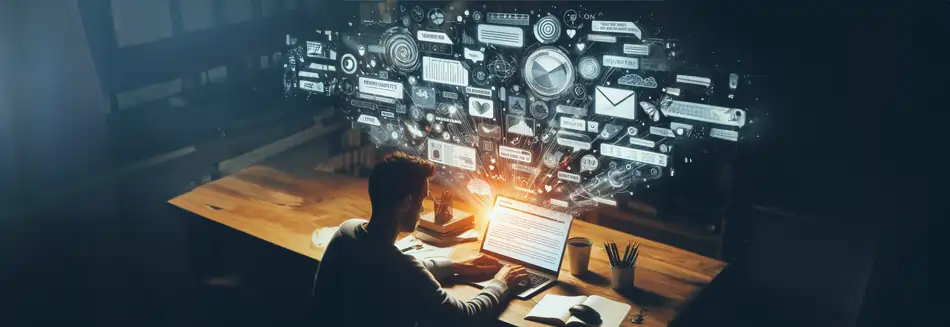Email structure that converts involves organization, marketing techniques and a good pinch of feeling.
Although there are different types of messages, the email structure should follow a basic pattern. First of all, you need to communicate and then entice the lead to take an action, which could be buying something, downloading a material, signing up for an event, etc.
This is what we call conversion. That’s why the main CTA is positioned right at the beginning of the message.
Keep reading to identify each phase of an email structure and apply techniques that can help you increase your conversion rate!
Table of contents
Subject line
This is where it all begins. The subject line is the gateway that will persuade the reader to open the email.
In fact, if your message isn’t in the lead’s inbox, all your investment goes down the drain. That’s why email verification is so important.
Without it, it’s impossible to know whether an email is valid or not. As a result, unverified lists are susceptible to bounces, spamtraps, junk and all kinds of risky emails that damage the sender’s reputation.
As a rule, the subject line should contain personalization. This creates a connection with the reader, as well as being a prominent element on the user’s screen.
Imagine how many emails are sent every day. The subject line is the only way to stand out from the competition!

Pré-cabeçalho
The subject line begins the work of persuasion, and the preheader has the function of concluding this objective.
This is because the preheader is the text that appears immediately after the subject line, finalizing the concept that will attract the reader to the inside of the email.
The subject line and the preheader together form one of the main email marketing KPIs: the open rate.
A good performance from this metric means that the lead is being receptive, and that the conversion rate will probably be good too.
On the other hand, when the open rate doesn’t go well, it means that both the subject line and the preheader should be rethought, as they are not succeeding in persuading the reader.
Email structure: message body
At the heart of the email will be your sales pitch, your approach to the lead in order to build a relationship, your transactional or informational communication, etc.
Personalization is also welcome here. You can (and should) exploit this by using the lead’s name, their pain points through direct copy and visual elements.
The internal composition of the message deserves special attention: there needs to be a balance between text and images. The general rule is to use 60% text to 40% images.
ISPs classify emails consisting of a single flat image as spam. So avoid creating your messages in this way.
And don’t forget to apply alt text, which is the description of the images. This makes it easier for the reader to understand if the image doesn’t load. Providers consider this to be good behavior and you will earn reputation points.
Choose to create your messages in HTML, so that they are easy to read in any browser. In this way, you help to optimize delivery and open rates.
The CTA in an email structure
You create identification with the lead by exposing their pain and presenting the solution to the problem. Now it’s time to call them to convert.
It is recommended that the main CTA is positioned right at the beginning of the message. This way, the lead who is interested in the content already has the option of converting quickly.
Other CTAs can be applied throughout the email, but it is important that the main call to action is in the user’s eye line as soon as they open the message.
The Call to Action button should attract the reader’s attention by using contrasting colors and, of course, accurate copy.
Don’t forget that the CTA must correspond to the lead’s stage in the marketing funnel. In other words, if the lead is at the bottom of the funnel, the call to action should be directed towards a purchase, and so on.
The CTA can be in image or text form. Define which format best suits your buyer persona and apply it.
Footer
The footer is where the background information for the message is located. But that doesn’t mean that this information won’t be accessed; on the contrary!
This is important information, but it shouldn’t be the main focus of the message.
Privacy Policy, Terms of Use and compliance with the GDPR should be displayed via specific links.
The footer should also contain all the company’s contacts and social networks, such as the website, name of the sender of the message (if any) etc.

Email structure: conclusion
There are various types of email, but all of them must have a subject line, preheader, message body containing a CTA and footer.
Even if your email is a newsletter, all of these elements must be present in order to ensure good reader reception.
An email containing all the necessary parts to create a connection with the reader is capable of nurturing the lead and maintaining a healthy relationship with them.
FAQ
The subject line and preheader are the gateway to the email. When well executed, they create the necessary persuasion for the reader to move on to the inside of the email. This is what defines open rates. And an email with good results in this KPI has a high chance of converting well.
The internal composition of the message should prioritize the balance between text and images. An email should never be created in a single image, as anti-spam filters block messages in this format.
It is recommended to create messages in HTML, to make them easier to open in all browsers and thus contribute to opening rates.
All the company’s contacts, such as its website, social networks, etc., as well as its Privacy Policy and Terms of Use.


